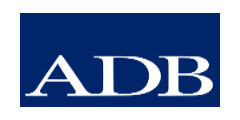Graph 1 shows the density of Georgian farmers’ revenues received from selling their produce, generated from the sample of 3,000 Georgian rural households. (For the motivation and methodology of our study, please refer to the article that was published here last week. It is also available online on the ISET Economist Blog: “Dumb Farmers Do Not Grow Big Potatoes”, by Florian Biermann and Ruediger Heining).
When the curve of the graph is high, it means that there are many farmers in the respective income range. When it is low, there are few. With respect to agricultural extension efforts, an important question is how those farmers who can be found in low income ranges of zero to 3,000 laris are different in their knowledge and skills from those few on the right side of the horizontal axis. In other words, what is the relevant human capital that allows for being successful in Georgian agriculture? In this article, we will give a preliminary answer to this question.
When interpreting the chart, it is important to note that the graph is restricted to monetary revenue. It does not include the non-monetary income of a farm, like tomatoes, potatoes, cheese etc. that were consumed by the members of a rural household directly. This explains why there are farmers that do not report any income from selling their products – they just consume their own products and may have non-agricultural income. It is also important that none of these farms are agricultural companies, but all are smallholders or medium-sized farms. The registered companies were surveyed separately and are not part of the analysis we present here.
FARM MANAGEMENT IS KEY
If one would pick one farmer randomly from the left side of the horizontal axis and compares them to one from the right side, the most striking knowledge and skill differences would be in terms of farm management.
Farm management knowledge and skills do not only increase the output per hectare but also affect the prices that were achieved for goods. This correlation does not exist for staple commodities like wheat, where most producers are just price-takers, but for primarily locally sold goods like tomatoes, niche products like tropical fruits, and speculative goods like walnuts.
The importance of entrepreneurial knowledge is also illustrated by the fact that all but one of the skills and knowledge areas that were included in our questionnaire had an impact only for the yields per hectare of particular outputs (e.g. skills in soil analysis had an impact on the yield of wheat and maize, but not on the yield of tomatoes). The only knowledge/skill area which we found to be important for the income that was generated with any arbitrary product was “trading and selling”.
The most promising step in moving Georgians farmers from the very left side of the horizontal axis towards the right side is therefore to bring some of them to the point where they sell (parts of) their produce, and those who are incapable of doing so to step out of agriculture. Afterwards, it is about enlarging the market to which they deliver. Based on this development model, the stages of entrepreneurship of a Georgian farmer are the following: (1) production only for self-consumption (subsistence farming), (2) production for local (village) markets and side-of-the-road sales, (3) production for intermediate traders, possibly on a contractual basis, and finally (4) integration in international markets. However, as arable land is limited in every country, at some point farmers cannot increase production further – or utilize economies of scale – if others are not handing over their land. Hence, a transformation from non-performing landowner to agricultural performer is called for.
These four stages mentioned above provide an orientation for the agenda of agricultural extension, and more generally, agricultural development in Georgia. Those farmers who are just self-consuming have to be taught how to produce for the local markets. For example, instead of producing the whole range of agricultural goods, which they produce for their own kitchen, they have to specialize on those products that enable them to make the highest incomes. Similarly, those who are already at that stage where they sell on local markets are to be brought to a level where they can become partners of intermediate traders or cooperatives. This requires the skills to plan harvest and deliveries in time with required quality and, of course, to be capable of reading and understanding contracts. Moreover, calculations skills have to be conveyed which allow for cost-covering pricing. Once farmers are already producing for intermediate traders, the next step is to go international.
LET GEORGIAN FARMERS GO INTERNATIONAL
Our data show a clear pattern: for those goods which are in Georgia primarily produced for the local market (often without competitive pressure from abroad), farmers tend to not understand their knowledge gaps but usually fall victim to the Dunning-Kruger effect (see last week’s article for a discussion of this problem). For goods that have a world market price which is the benchmark for local farmers, which lets them “feel” the competition of foreign producers, farmers are more realistic in their self-assessment and there is no Dunning-Kruger effect. One way to move Georgian agriculture ahead is therefore to foster the integration of the Georgian producers in the regional and global market. This will lead Georgian farmers almost automatically to understand their own skill deficits and become more productive by closing them.
Government policies should foster a development where, at least in principle, Georgian farmers could keep up with international competitors. While this may sound overly ambitious, it is important to see that the movement towards world market integration can be sequential. It is not necessary, and for technical reasons also not likely, that Georgian producers will compete with countries at the current productivity boundary like France and the USA. Rather, the international orientation of Georgian producers could start with Armenia, Azerbaijan, Russia, and Turkey.
The role of the agricultural knowledge system (education and extension) in this internationalization process is central, as it entails to endow Georgian farmers with necessary management knowledge, enabling them to deal with export companies, bureaucratic requirements, calculate their necessary margins, and understand the preferences and conditions that prevail in foreign markets. All of this will make Georgian farmers much more entrepreneurial, which requires a set of skills that can be explicitly featured in the extension agenda.
As most of the preliminaries needed for such a development agenda depend on managerial skills, this is the one area on which education reform and agricultural extension activities should initially focus. Later, specialized agricultural skills for particular groupS of farmers can be added.

















Comments
I like the article, but dont agree with the caption under the picture. Why is smallholder agriculture necessarily ineffective? What is your definition of effectiveness?
It may be impossible for most farmers to live off 1 hectare of land, but agriculture does not have to be ones only occupation. If you have 1 hectare of hazelnuts, you will have to work really hard about four weeks a year (one week at a time). You will earn about 6,000-8,000 USD (depending on market prices), which is not so bad for 4 weeks of work. Moreover, you can do a lot of other useful things in the remaining 50 weeks. At the same time, I dont see why the same one hectare of hazelnuts would be necessarily used more efficiently by the likes of Ferrero.
Some smallholders actually make a lot of money. The Pinot noir grapes that go into the production of Romanee-Conti wine are grown on 1.8 hectares, a plot only slightly larger than the Georgian average. Annual production of Romanee Conti (according to Wikipedia) is 450 cases/per year, i.e. 5400 bottles at $13,092 per bottle. This makes for an annual revenue of more than 70mln USD. Not bad at all :-)
I liked the classification of Georgian farmers based on the stages of entrepreneurship. These stages (subsistence, local, intermediate traders, and international) might be used as an orientation for the agenda of ag extension in Georgia. However, going from local level to other stages (intermediate, international) should not be taught/advised to be the only way of farm development. The role of diversification strategies should not be neglected. Diversification of agricultural production might reduce environmental, price and other risks for farms. Moreover, part-time farmers might be engaged in some off-farm activities (e.g., agrotourism, recreational activities, catering), contributing to comparable income levels between rural and urban workers.
In the developed countries (e.g. Switzerland) such potentials are almost exploited and farms might have greater gains from specialization (utilizing economies of scale). In low-income countries, however, there is a lot of untapped potential for diversifying farm production and/or activities. To better integrate ag extension and overall rural development policies in Georgia, extension workers should also help in developing both on-farm and off-farm diversification skills of farmers.
I agree with Erics comment, that being a smallholder does not exclude from being efficient. The main difference between small and larger farms in this regard is that for a larger - but inefficient - farm one would need to inject permanently significant amounts of money to keep the farm running - while a smallholder can afford to subsidize inefficient production through his other income for quite some time.
Just in the sense of the joke: A Canadian newspaper printed an interview with a farmer that just had won USD 1 million in the lottery. What will you do with the money, buy a house in the city? - No. - Travel around the world? - No. - Divide the money among your relatives? - No. - So what in the end will you be doing with all the money? - I just will keep farming until the money is gone.
Regarding the need for structural adjustments the blog states: However, as arable land is limited in every country, at some point farmers cannot increase production further – or utilize economies of scale – if others are not handing over their land. - There is little doubt that this is needed, but the crucial question here is, how this will be realized. The first part of this blog rightly describes the nature of a classical farmer in Georgia as a status rather than a profession. Indeed, many became farmers in the nineties out of a lack of choices and many farmers continue like this today.
To make handing over the land work out, those farmers by accident need first to be given better real choices for employment in their regions. Development of SMEs in rural areas of Georgia to create income generating alternatives is therefore a highly important precondition for adjustments in the agricultural production landscape. And those adjustments will likely progress gradually. 55% of the 300,000 farms in Germany are run by part-time farmers (in a highly efficient way) that have a regular (often full time) job in parallel. The annual decline of total number of farmers by about 2-3% is absorbed by employment alternatives, to a good extent in the rural areas.
A further increase of job alternatives in rural areas of Georgia is also highly important to increase the overall attractiveness for young professionals to stay at home instead of keeping moving to urban centers. This matters for addressing effectively the pressing issue of a lost generation of Georgian agricultural experts, which has appeared as much as the result of a collapsed education system as the result of an overall decreasing economical attractiveness of living in rural areas.
Last but not least - a natural pride to be a farmer has been proven in many countries to be another important driver for attracting the young generation to continue the farming tradition of their families. Georgians have all good reason to look back with pride on their long history of being a nation where farming has been the countrys economic and cultural backbone due to the favorable climatic and geographical conditions the country enjoys. Enforcing these existent cultural- historical memories would surely allow to increase the number of young Georgians that want to master the art of farming in the 21. century.